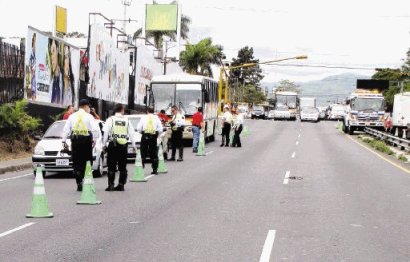Ever dream of becoming a farmer or rancher, but could not give up the amenities of a luxury home and being close to a city. Well, now it is possible live this dream in a 6,000 square foot mansion on a 30 acre horse farm within 45 minutes to the city of San Isidro, Costa Rica. Located in a rural area surrounded by coffee farms and cattle ranches this property offers private tranquility with tons of usable land, horse stables, caretaker house, pastures, creek with two cascades, and borders the river “Rio General”. Here is a detailed video of the home and property for your viewing pleasure….
https://vimeo.com/51543971
This estate home spared no expense in its solid concrete block construction and offers the finest finishes available. Downstairs the home features a large office/study, great room with 30 foot high windows bringing in the views and natural light, and guestroom with an en suite bathroom.
 There is also a huge open professional kitchen, living room and breakfast table, formal dining room, and an outdoor terrace and dining area.
There is also a huge open professional kitchen, living room and breakfast table, formal dining room, and an outdoor terrace and dining area.

You walk up Cristobal hardwood (a rare native hardwood) stairs to the two master bedrooms and baths.
 The main master bedroom is very spacious and has bamboo wood floors, walk-in closet, and access to a wrap around balcony that enjoys the views and sounds of the cascade next to the house.
The main master bedroom is very spacious and has bamboo wood floors, walk-in closet, and access to a wrap around balcony that enjoys the views and sounds of the cascade next to the house.
 The en suite bathroom is literally the largest I have ever seen; and has a Jacuzzi tub for two, his and hers showers, his and hers vanities with granite counters, and even his and hers toilets! The other master bedroom is just as spacious with bamboo floors and balcony access as well. Across the hallway is another large walk-in closet and oversized master bathroom with its own Jacuzzi tub.
The en suite bathroom is literally the largest I have ever seen; and has a Jacuzzi tub for two, his and hers showers, his and hers vanities with granite counters, and even his and hers toilets! The other master bedroom is just as spacious with bamboo floors and balcony access as well. Across the hallway is another large walk-in closet and oversized master bathroom with its own Jacuzzi tub.
 This property has potential for a retired couple or family that wants to live off the land and enjoy a country lifestyle.
This property has potential for a retired couple or family that wants to live off the land and enjoy a country lifestyle.
 The structures are in place to raise horses with a 6 stall stable, a coral, and plenty of pasture land to graze.
The structures are in place to raise horses with a 6 stall stable, a coral, and plenty of pasture land to graze.
 There is also Tilapia pond already built for a constant fresh fish supply. You could raise free range chickens for laying eggs and for a food source. Due to the extremely fertile soil near the river you could also transform this property in to an organic fruit farm and at the very least produce sufficient fruit and vegetables for your family or small community. Could even get a couple dairy cows to produce your own milk and cheeses. In just in case you cannot produce everything you need there are small markets close by and large supermarkets in San Isidro 40-45 minutes away.
There is also Tilapia pond already built for a constant fresh fish supply. You could raise free range chickens for laying eggs and for a food source. Due to the extremely fertile soil near the river you could also transform this property in to an organic fruit farm and at the very least produce sufficient fruit and vegetables for your family or small community. Could even get a couple dairy cows to produce your own milk and cheeses. In just in case you cannot produce everything you need there are small markets close by and large supermarkets in San Isidro 40-45 minutes away.
 There is an extraordinary amount of flat and usable land multiple additional homes could be built for a family compound or mini gated community. Even numerous rental cabins and a Bed & Breakfast operation could be possible. For more information click this link about this amazing Luxury Home on 30 Acres or visit www.DominicalProperty.com for more residential homes and farm listings.
There is an extraordinary amount of flat and usable land multiple additional homes could be built for a family compound or mini gated community. Even numerous rental cabins and a Bed & Breakfast operation could be possible. For more information click this link about this amazing Luxury Home on 30 Acres or visit www.DominicalProperty.com for more residential homes and farm listings.





























